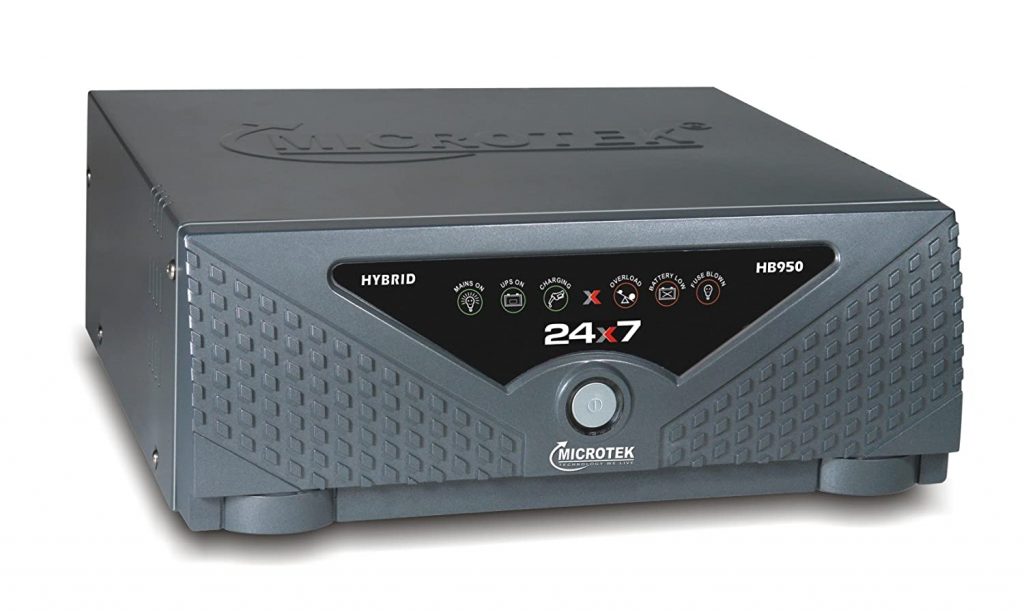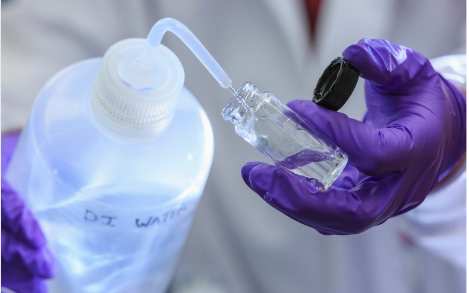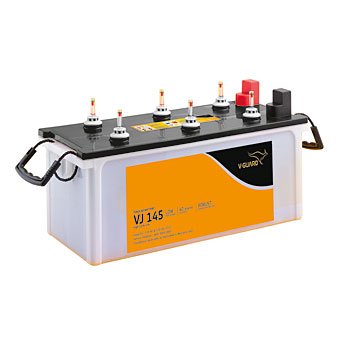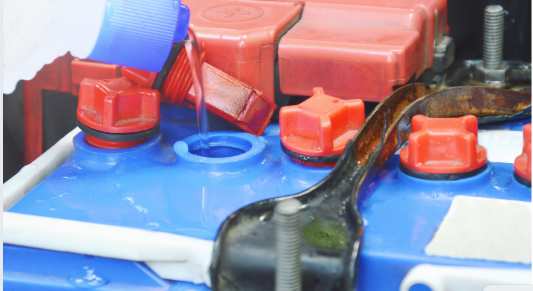India is a developing country and has emerged as a leading super-power. Nevertheless, there are a few ‘embarrassing’ issues that need to be attended to. Power cuts and shortage are some of the major problems that have been preventing our nation from reaching our true potentials. However, with Science and technology on our site, we do have a solution for power shortage as well. This is in the form of the ingenious machine called the ‘inverter.’ Thanks to the Japanese company Toshiba, that the world was introduced to the ultimate solution for uninterrupted power supply.
Contents
- What Is An Inverter?
- Parts Of An Inverter
- The Inverter Batteries
- What is Distilled Water?
- What are Inverter Batteries?
- Why Do We Use Distilled Water for Inverter Batteries?
- When to Add Distilled Water in an Inverter Battery?
- How To Fill Distilled Water in Inverter Batteries?
- Tips To Maintain Inverter Battery
What Is An Inverter?

The inverter is a device that works by converting the Direct Current from the batteries into Alternating Current. This ‘power’ is supplied to your home either in the form of 110/220 V alternating current. Hence, one must bear in mind that the inverter does not ‘provide’ or ‘create’ any electric current. It merely makes it accessible in a manner that it can operate the devices under the case of power cuts.
Parts Of An Inverter
The basic inverter is an orchestra of various parts that work in complete synchronization to convert and supply the Alternating current to the connected devices under a situation of power-cuts. The main parts of an Inverter are:
- UPS Module
- Rechargeable Batteries
- Transformer
- Capacitors
- Rectifier circuits
- Display and controls
- Switches of various types
Of these, we are going to understand the working and importance of the batteries in an Inverter Circuit.
The Inverter Batteries
The inverter Battery is slightly different as compared to the automotive battery. To be more precise, the Inverter batteries are comprised of a lower number of plates that are also thin. Also, the Inverter battery comprises a higher volume of electrolytes. This is to ensure that the chemical reaction can continue for an extended period. Consequently, this is essential to allow the production of current for a longer duration of time. As the battery is an important part of an inverter, these are available in various types:
- Lead Acid Batteries
- Maintenance Free Batteries
- Tubular Batteries
So, let us consider some of the important factors that ensure the better working of a Battery of an inverter. Most users might be aware of the fact that the electrolyte of an inverter battery is submerged in Distilled water. Why is this so? What makes it important? Let us find out with the help of a few important questions.
What is Distilled Water?

For a common man,’ any water in a plastic’ is distilled water. However, Scientifically speaking the Distillation is a process by which the water is made to completely boil into vapour form and then condensed back to a liquid state in a separate container. This process ensures that the water is in its purest form or is ‘Deionised.’ Thus, the distilled water is free from ions, impurities, minerals. In a nutshell, it only contains Oxygen and Hydrogen.
What are Inverter Batteries?

As mentioned earlier, the inverter batteries are slightly different from Automotive batteries. These are specifically designed to ensure a long-term flow of electric current. For this purpose, the inverter batteries comprise a high volume of electrolytes. This is to make sure that the chemical reactions continue for a long time. This way, the conversion of DC to AC can continue for as long as possible.
Why Do We Use Distilled Water for Inverter Batteries?

Firstly, it needs to be kept in mind that the distilled water is free from minerals, ions, salts, and other kinds of impurities. In case the water from the other sources is used, the impurities can clog the pores and also form a layer over the plates. This can greatly affect the performance of the electrochemical reactions and the consequent production of power from the batteries. Now, why do we need water in the inverter batteries?
This is mainly because the batteries are composed of electrolytes. The electrolyte is made of Sulphuric Acid and water. During the battery charging, the electrolytes undergo heating up, which results in the evaporation of the water. As the process of electrolysis takes place, the water is broken down into Hydrogen and Oxygen gases. Over time, the electrolyte levels in the battery lower with time. This could lead to the plates in the battery cells to lay exposed, which can lead to damage. Also, if the water levels are not maintained, the Sulphuric Acid in the electrolytes can get too concentrated. Therefore, it is of utmost importance that the water levels in the inverter battery remain at a certain level.
When to Add Distilled Water in an Inverter Battery?
You must keep a check on the water levels in the inverter battery. This can be done with the application of various methods:
- Use of Indicators: These are simple devices that are attached at the back of the battery plug. When the light turns green, it means the electrolyte levels are fine. In case the light turns red, the water needs to be poured into the inverter
- Use of Automatic Water Filler System: This system utilizes the filler caps with floats and is connected with the help of water hoses. This prevents the battery from overfilling. The user does not have to worry about the water levels, as the automatic water filler system takes care of that.
How To Fill Distilled Water in Inverter Batteries?
Water can be filled into the inverter batteries by the following methods:
- Turn off the Inverter switch and the power socket switch.
- Twist the topping vent plugs by turning them anti-clockwise to remove them.
- Once the vent plugs are removed, place the funnel into the hole.
- Slowly pour in the distilled water through the funnels.
- Repeat the process for all the chamber till they are filled
- To get the right measurement of the water-filled, you need to measure it.
- This can be simply placing the vent plus onto the hole and continue to fill it up till it reaches the ‘green mark.’
- Now, shut the vents back by twisting it in the clockwise direction, thus closing the chambers.
- And you are done. Wipe clean the device with a dry clean cloth.
Tips To Maintain Inverter Battery
Just like every other electronic device, your inverter battery also needs to be taken care of. This can be done in the following way:
- Use a level indicator to check the water levels in the battery. This is essential as low levels of water can lead to the corrosion of the battery plates. Also, the process of electrolysis will not sustain itself if it is not ‘watered enough.’
- Use Distilled water at all times. This is one of the most important steps when it comes to taking care of your inverter batteries. Distilled water is free from salts, ions, and impurities. This way, the process of the chemical electrolysis will continue without being altered by any unwanted components.
- An automatic battery water filler system can go a long way in ensuring that the water remains at optimum levels at all times. This way, your inverter will not have to go ‘thirsty’ in any way and corrode over time.
- Clean the batteries regularly. Never allow the batteries to catch dust and dirt. This leads to the leakage of current and discharge in the process. This can cause the battery to go un-balanced in the process.